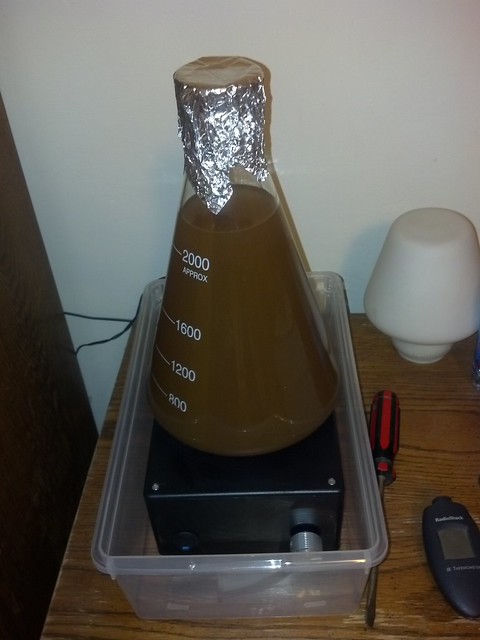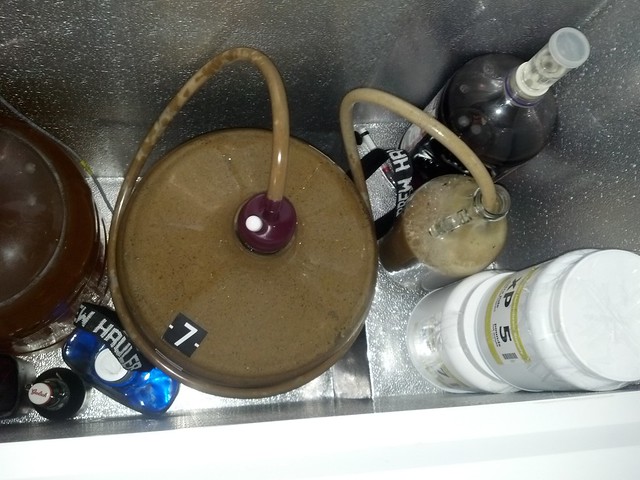Justintoxicated
Well-Known Member
First time I made a starter my GF threw it out, had to drive 60 miles to find yeast and ended up pitching directly into the wort.
Now I built a stirplate, made another 2L starter last night, caped it with a piece of foil, and let it run 24 hours so I could brew tomorrow. Just removed it from the stirplate and found 2 fruit flies inside.
I would assume it is ruined again. What a waste of work and time and money.
I'm thinking about giving up on starters since they only seem to bring delays.
And what to do now? I was using Greenbelt yeast, which is a special yeast from Wyeast that I will not be able to find locally. Overnight ship maybe 3 bags of it and dump them directly into an imperial IPA? Delays delays delays.
And how the hell did fruit flies get into my starter!?! it's not like I left the foil loose on the top oh no!
Can I use it anyways? Cause if I do 2 day shipping it will cost me $55 for 2 packets of yeast. maybe pluck out the flies with some sanitized tweezers?

bad yeast starter by Glamisduner, on Flickr
http://www.austinhomebrew.com/product_info.php?products_id=12720
This is the yeast I am using ^^^
The only thing I can think of is that maybe they flew into the wort while it was boiling? But even then I had the lid mostly on the pot the entire time. Maybe I just can't make starters? Can I use an airlock? It might be the only way! maybe they flew into the DME before I dumped it into the pot?
Weekend Ruined once again....
Now I built a stirplate, made another 2L starter last night, caped it with a piece of foil, and let it run 24 hours so I could brew tomorrow. Just removed it from the stirplate and found 2 fruit flies inside.
I would assume it is ruined again. What a waste of work and time and money.
I'm thinking about giving up on starters since they only seem to bring delays.
And what to do now? I was using Greenbelt yeast, which is a special yeast from Wyeast that I will not be able to find locally. Overnight ship maybe 3 bags of it and dump them directly into an imperial IPA? Delays delays delays.
And how the hell did fruit flies get into my starter!?! it's not like I left the foil loose on the top oh no!
Can I use it anyways? Cause if I do 2 day shipping it will cost me $55 for 2 packets of yeast. maybe pluck out the flies with some sanitized tweezers?

bad yeast starter by Glamisduner, on Flickr
http://www.austinhomebrew.com/product_info.php?products_id=12720
This is the yeast I am using ^^^
The only thing I can think of is that maybe they flew into the wort while it was boiling? But even then I had the lid mostly on the pot the entire time. Maybe I just can't make starters? Can I use an airlock? It might be the only way! maybe they flew into the DME before I dumped it into the pot?
Weekend Ruined once again....




